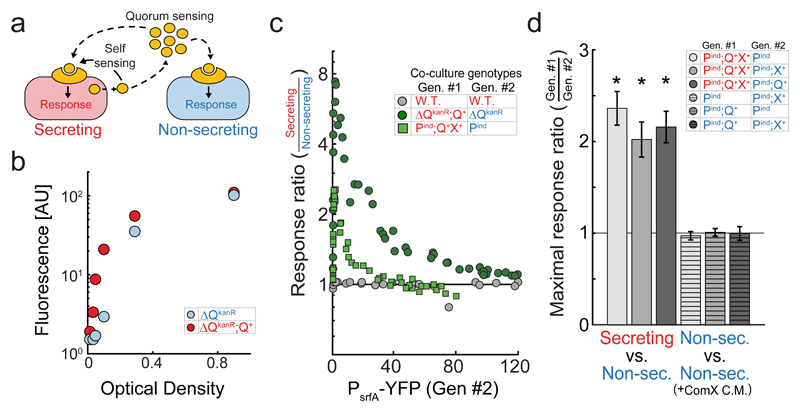Figure 1. In co-culture, ComX-secreting cells have a stronger quorum-sensing response than non-secreting cells.
(a) Quorum- and self-sensing can be decoupled by co-culturing fluorescently distinguishable secreting and non-secreting strains, both encoding for a fluorescent reporter of quorum sensing response. Secreting and non-secreting strains are correspondingly denoted by a red and blue colors throughout the paper. (b) ComX-secreting (ΔQkanR;Q+) and non-secreting (ΔQkanR) PsrfA-YFP reporter expression, measured simultaneously at different optical densities during co-culture, by introducing distinguishing fluorescent markers into the strains (Supplementary Fig. 4). (c) Quorum-sensing response ratios of ComX- secreting and non-secreting variants in co-culture as a function of YFP fluorescence of the non-secreting strain. Shown are results for the overexpressed system (dark green) and physiologically expressed system (light green). Additionally, results are shown for a control co-culture comprised of a pair of wild-type strains (gray). (d) Maximal response ratio (mean±50th percentile expected variation) for six co-cultures of ComQXP variants, which differ in the presence or absence of the comQ and comX genes, as described in the table. Maximal values are calculated by interpolation from response profiles presented in Supplementary Fig. 6. Conditioned medium from a ComX-producing E. coli strain was added to co-cultures of two non-secreting strains. Asterisk mark results which are statistically different from a ratio of one (strict quorum-sensing null hypothesis). Results in (c) were taken from ≥4 biological repeats for each co-culture pair. In (c,d), each co-culture pair was measured over ≥5 time points at different optical densities (All data is given in Supplementary File 1).

